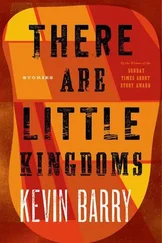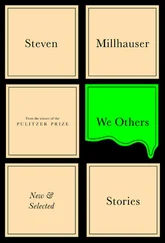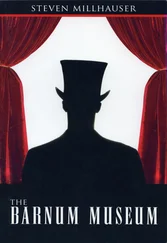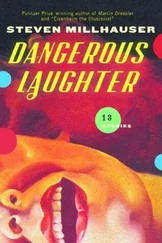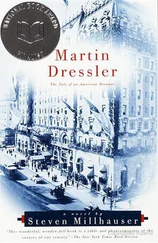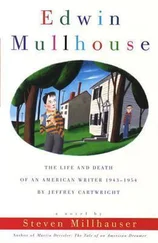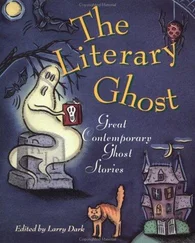Although the Journal records an increased irritability to certain stimuli, such as the sharp sound of a knife on a plate, the smell of urine, and the sudden dimming and flaring up of a candleflame because of imperfections in the wick, one of the odder manifestations of Elizabeth’s illness was heightened sensitivity to literature, music, and art. Certain slow, languorous rhythms in the 1842 Poems of Alfred Tennyson, specific hushed, dreamy, drowsily drawn-out effects in Keats, produced by long vowels interwoven with droning m’s and n’s and softened with sibilants (she records “The maiden’s chamber, silken, hushed, and chaste” from The Eve of St. Agnes) , stray lines suggesting a mysterious vastness (“Noiseless as fear in a wide wilderness”) or ringing with a call to some high action (“Say, my heart’s sister, wilt thou sail with me?”) would bring a quickening of heartbeat and flushed cheeks, so that Elizabeth would be forced to put aside a volume and lie with her hands folded on her collarbone, as if to press down her excitement. Listening to Sophia play Schumann’s In der Nacht from the Fantasiestücke , op. 12, or Chopin’s Nocturne in E-flat major, op. 9, no. 2, or the andante doloroso of Sonnenstein’s Brocken Sonata, op. 16, with its long chains of unresolved harmonic suspensions and its plunging five-note motif, she would be brought to a state of dangerous exaltation, during which a pulse throbbed “visibly” in her neck (did she observe herself in the mirror?) and she felt alternately fiery hot and icy cold. But it was the art of painting that evoked in her the strongest and most disturbing responses. Once when William brought her a book of engravings of medieval German paintings, Elizabeth was gripped by a feverish excitement that kept her from sleep all that night and led the next morning to a fit of such violent coughing that Edmund in alarm had to summon Dr. Long from Strawson. She seemed to take in a picture all at once, like a sudden blow, and to experience it not simply in her nerve endings but in the deepest fibers of her being. It was as though some protective film had been dissolved by her illness, leaving her wide open. But if she was acutely susceptible to painting in general, she was fervently and perhaps unwholesomely sensitive to Edmund’s painting in particular, the effect of which she describes in language of increasing intensity: “I turned to look, and lo! it entered me like fire” (2 May 1845); “a blow to the temple was that night sky to me, and I staggered back, gasping for breath” (14 August 1845); “the sweet poison flowed in me, chilling as it warmed” (8 November 1845).
That summer William and Sophia prolonged their stay at Black Lake to mid-September. It was during the second week of September, on a bright and unseasonably warm day, that Elizabeth held an interview with William which she recorded briefly in her Journal, but which Sophia reported at greater length in a letter to Eunice Hamilton (12 September 1845). Lying on her sickbed, her long hair strewn about her, her eyes “glowing with unnatural brightness,” Elizabeth asked William to watch over her brother “if he should ever be left alone,” for Edmund was “like a child, in some things.” William gave his solemn pledge. When he stepped from the room, Sophia noted that his face was wet with tears.
[26]
SELF PORTRAIT
1845?–46
Oil on canvas, 36 1/4 × 30 3/8 in.
In October 1845 Moorash spoke to Elizabeth of a self-portrait, but it is not clear from the Journal whether he had actually begun it. A self-portrait is mentioned again in December, although in a way that suggests he may still have been only dreaming his way toward it (8 December 1845: “E hard at work on The Devil’s Dream [a lost painting]. Spoke of paradox of self-portrait: what is a self?”) He was clearly at work on a self-portrait by May 1846, and he appears to have worked on it steadily from that time, setting aside all other work, until his death on 27 July.
Elizabeth rallied in the fall of 1845. Despite a small setback in November she had recovered sufficiently by mid-December to enjoy a ten-day Christmas visit from Sophia and William, during which all four took long walks in the wintry woods and fields, went skating on Black Lake, and hired a sleigh with “handsome carvings and cushioned seats, drawn by two horses, a black and a white,” in which they took long rides through wild country. She was still well in April, when Sophia and William returned from Boston to their cottage on Black Lake, but in mid-May she took a turn for the worse, staying in bed for three days with headaches and violent vomiting. By June she had returned to her semi-invalid life, receiving visitors in her bedroom or on the sagging sofa in the kitchen-parlor. The Journal entries for June and July are extremely irregular: long, detailed entries on days of relative good health alternate with abrupt, fragmentary notes or utter silence. Despite the gaps, we are able to follow the progress of the Self-Portrait in some detail, for Moorash spoke about it to Elizabeth more than he was accustomed to speak of his work in progress; and we can trace the evolution of a strange scheme that quickly became an obsession.
The first mention of the scheme occurs on 6 June, a month after he had begun the Self-Portrait: Moorash intends to show the picture to Sophia in order to “open her eyes.” The painting is not for Sophia; but he intends that she shall “be wakened by it from her slumber.” Is he here perhaps thinking of himself as the triumphant prince, climbing to Dornröschen’s tower? Elizabeth is skeptical of the plan: apart from Sophia’s lack of understanding of Edmund’s work, there is the question of the proper aim of a work of art. Moorash argues that a painting is intended to “excite feelings”—why then should he not wish to excite the feelings of Sophia? Elizabeth asks if that is all he intends. Moorash laughs harshly and replies that the devil works in mysterious ways — perhaps he’ll possess her soul by means of his portrait. Elizabeth, disturbed by his answer, remains silent. On 18 June Moorash is discouraged and thinks of destroying the painting, but on 20 June he is hard at work. On 26 June Elizabeth is attended by Dr. Long after a bad night. The next day Moorash, who has been painting in the barn, moves to his cramped upstairs studio in order to be near Elizabeth. There is a gap of eight days, but on 5 July Elizabeth reports that she has taken a walk with Sophia and William. On 7 July Moorash tells Elizabeth that it’s enough for him if Sophia is simply “presented with the evidence.” His intention appears to have shifted: he now wishes to address her moral sense. Within a week he is filled with doubts and is on the verge of destroying the picture, but he recovers his enthusiasm and returns to work “with a vengeance.” On 17 July Moorash states that “a painting is a dagger aimed at a heart.” His intention appears to have changed again: he now wants to wound Sophia with his art. On 18 July Elizabeth asks whether he plans to woo Sophia with his portrait. Moorash grows thoughtful and replies: “No, I want her to look at me. She has never seen me.” The continual assertion of contradictory intentions during the painting of Self-Portrait is perhaps indicative of an overwrought state of mind, but it should be noted that the shifting esthetic positions of June and July are connected by a consistent theme: Moorash is insisting on the power of painting to affect a beholder, to enter another mind. On 22 July he is “almost done with” the portrait. On 23 July he asks Elizabeth if she is willing to look at it and decide its fate. He shuts himself up for three days of feverish work and on the evening of 26 July brings down the canvas, covered with a white cloth, and sets it up on an easel at the foot of her bed. Facing Elizabeth, he watches her closely as he lifts the cloth.
Читать дальше



